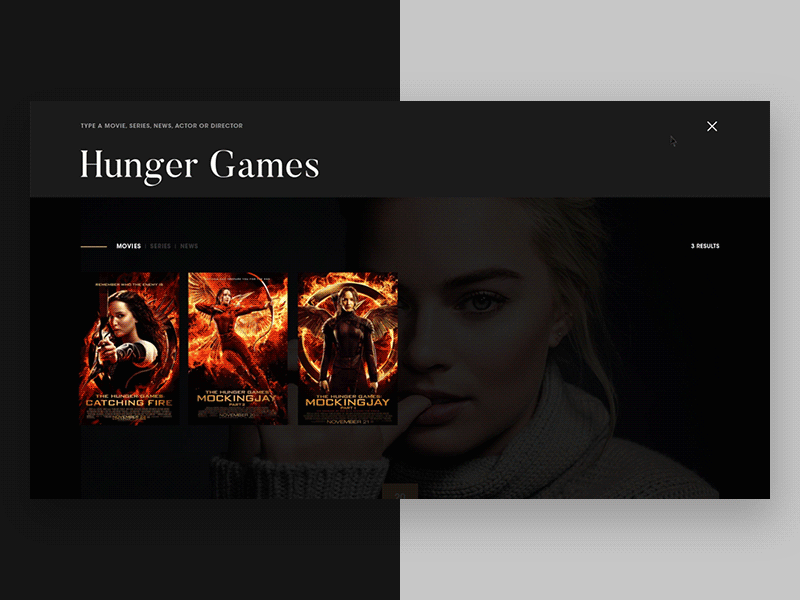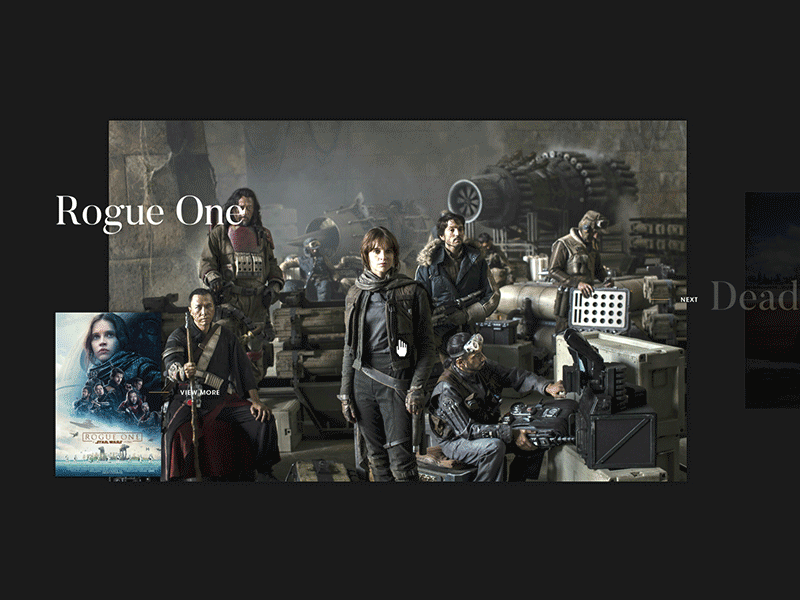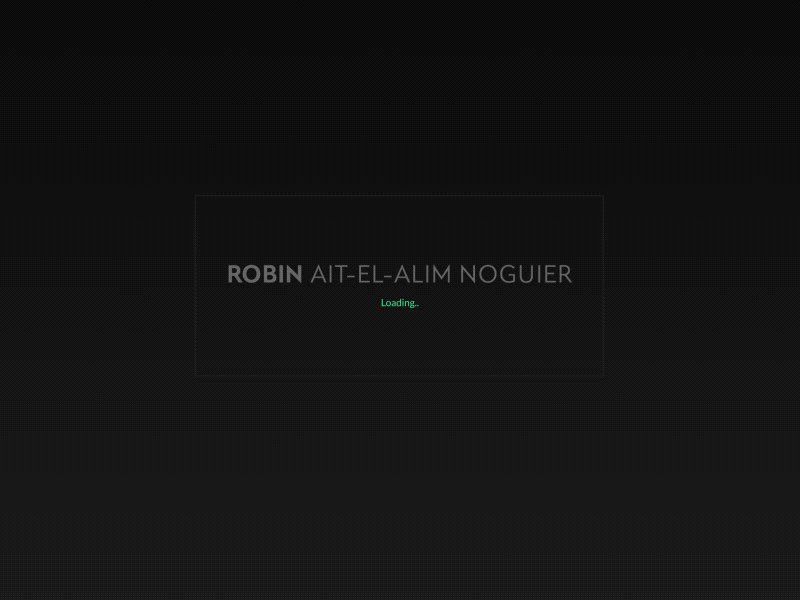What led you into design?
I'm sure this is the simplest question ever for a lot of designers, and I wish I could say the same.
Long story short (kind of), I first studied electrical engineering for 2 years and hated every second of it. To get the diploma, I needed to do an internship and I knew I didn't want to do it in electronics. Television was something that interested me for a while, so I asked if I could do my internship at a TV channel even if it wasn't about my field of study. Somehow, they allowed it.
After being ignored by almost every TV channel in the world, I got accepted to an unpaid internship in Montreal, Canada to work as a cameraman (and a bunch of other stuff). I really loved it, and it had a big impact on me: I finally realized that you don't have to hate work, you can actually work on things that you enjoy doing. I spent a lot of my free time in Canada messing around with After Effects and Photoshop. My mind was blown by all the things that you can do.
After going back to France, I applied to a web school in Paris, HETIC, and somehow got accepted directly into the third year. This good news meant that I had to learn what the other students learned during those first two years, when I was busy welding and looking at signals on an oscilloscope, poor me. I will always remember when, on the first day, students asked me if I was a developer, a designer, or a project manager. I answered no to all three questions, and it was pretty embarrassing.
I had to LEARN everything ... so I did! I stopped playing sports, going out, hanging out with friends, everything that was keeping me away from my work. For three entire years, I was working all the time and not sleeping much. Every weekend, I was in my dorm room from Friday night until Monday morning (a bit lonely, but after a while, you get used to it). I started by learning basic front-end development but at some point, I needed to design things so I could code them. Shortly after, I became obsessed with how things look, work, move, and interact with each other, so I focused 100% of my time on design.
And kids, that’s how I got into design.
What does a typical day look like?
A typical day at Ueno is an awesome day where you do good and exciting work while being surrounded by amazing and talented people. Period. Next question, please!
Not enough? Okay, I'll follow up on that.
I usually wake up around 7:30 am, go to the boxing gym, and get to the office around 9 am. If I don't go to the gym, I just oversleep until 8:30 am like a lazy teenager: no morning routine secret here, sorry.
Once at the office, we always start the day by eating a yummy breakfast (kudos to Najla, our amazing office manager), which is mostly eggs and avocado (am I being too unnecessarily descriptive here?). Anyway, it lasts around 20 minutes. We talk about everything but work. This is what happens when you work with friends and not just co-workers.

9:30 am is the time when I start working.
I'm plugging one pro-tip here: do not check Twitter, Dribble, Mail, WhatsApp, or cat Tumblrs first thing in the morning. Your brain is fresh, so don't waste this energy: tackle the hardest tasks on your to-do list. You'll be able to do that inspiration surfing later in the day to take a break.
I usually work heads-down, put my phone away, and use Slack only if necessary until lunch time.
12pm: One of my favorite parts of the day, LUNCHTIME!!!


The whole team stops to eat lunch together at 12 on the dot. We have a food catering service paid by the company that delivers delicious food every day. Free food does taste even better.
We eat and talk together for around 30 minutes, and then we play some PS4 or chill a little before going back to work.


I'm pretty focused during the afternoon working on new designs, sketching new ideas, doing new animations, or coding new prototypes. I try to do a one-hour block without being distracted, no breaks or looking at my phone. It's crazy how much more you can get done if you just remove useless things. Let's say that you're texting with someone: half of your brain is wondering what this person is gonna reply and how you're gonna then reply to that. You're not completely working.
When I don’t feel productive anymore, I take a break and do something to clear my mind. It can be juggling, talking to a coworker, getting some coffee…


For my current project, I usually have a design review with the client every other day around 3pm, so I Uber to their office with my team (usually 2-3 people) and show the client what we've been working on. The working session is done usually around 6pm.
I usually go back to the office when I want to work more on Ueno projects, side projects, or freelance work. Sometimes I have dinner with the client team, or I just go home happy, with the satisfaction of work nicely done.
What’s your setup?




Where do you go to get inspired?
I have three different ways of getting inspired.
The first one is to go for a walk (WITHOUT MY PHONE), workout, or do anything that doesn't put a digital screen between me and the outside world. It always works. My brain automatically refills with all the creativity and energy that I need to tackle new problems.
The second one is looking at nice photography and magazines.
Those can inspire me for a visual direction, a layout, or even a concept.


The third one will be, without surprise, going on websites like Siteinspire, Behance, Dribbble, Fwa and Awwwards. I think it's important to look at that to stay up-to-date, have an idea of how things are changing, and see what the cool kids are doing these days.
What product have you recently seen that made you think this is great design?
Framer
Framer is, for me, the best prototyping tool out there. I have to send a huge thumbs up to this team for making such a good product and for shipping new features really often. I'm using it more and more, and it became a critical part of my design process. It’s super easy to get started, and yet so powerful when you master it. With Framer, you become a designer with the superpower of testing things quickly and efficiently. I can make things move with any video software like After Effects, but by putting your design in the hand of your client, you collect super useful feedback… and you impress them with something that looks like a final product.
Lifesum
Lifesum is a lifestyle app that allows you to track your habits.
They managed to create a good-looking UI and a seamless experience. It's super easy to use, everything is in its place, and make sense from a user experience standpoint.
List.design
List.design allows you to find lists of almost everything you will ever need in your design comps. I think the idea here is simple and yet super useful.
Savee.it
Savee is a content curation platform which is, unlike Pinterest, made specifically for designers.
What pieces of work are you most proud of?
As a freelancer, my favorite project (maybe because it's the most recent one) was for Eagle Films. Eagle Films is an active player on the entertainment scene as a major Hollywood movies distributor and co-producer. They reached out to me to not only redesign their website, but also to change the look and feel of their brand. Almost everything but the logo has been updated. The client gave me full freedom to do what I wanted, and it has been amazing to be able to be super creative and work on such a big project.



Portfolio 2014-2015
Even though now my portfolio is really outdated, I’m still proud of it for the only reason that it changed my life completely. It allowed me to break into the industry and to put my name out there. My goal was to apply for an internship, but I didn’t even have to. I received more than 100 inquiries for jobs and internships, which was totally insane for me. I still receive freelance inquiries from it.

Uber.com
As a full time designer, one of my favorite project was the work we made for Uber: uber.com. The team included members of the Uber brand team and a few designers from Ueno.

Redbull TV
I was interning at that time and it was my first project, so it has been amazing to see it evolve from the beginning to the end. We wanted to create the most seamless experience possible to watch the content available on Redbull.tv.
I worked on visual interface and user experience explorations under the creative direction of Chad Tafolla, and with other designers from Ueno.

What design challenges do you face at your company?
The first challenge that comes to mind is how to always improve as fast as the other unbelievable designers in the company. Everyone is very dedicated to pushing themselves and making each other’s work better. When I see that other people are doing amazing things, I just know that I need to step up my game, and you definitely can’t rest on your laurels. I love this way of working because it always pushes us to become better designers.
I'm also at the client’s office a lot, working with the client team. We need to fit in and to build good relationships, a lot of times at a personal level, to be able to collaborate well together. We aim to be an extension of the client team, and we work with them and not for them.
What music do you listen to while designing?
Any advice for ambitious designers?
It’s easy to be a good designer: work, and when you’re done working, keep working. A lot of people might disagree, but to me, there is no such thing as talent. Of course, some people will be slightly better at doing certain things, but nothing can beat hard work, nothing. In our industry, everything is always changing, and your value will depend on how eager you are to learn new things and keep pushing to stay on top of your game. The more you learn, the better you'll become at learning.
To move forward, you will need a direction. Otherwise, you might get lost and being LOST is not cool (even if you're a TV show). That's why you need to set goals for yourself, both professionally and personally. I'm not talking about what you want to do in 10 years, but at least what you want to improve on this year, and what kind of projects you want to work on.
Last thing for young folks, please do not blindly chase the money. There is money in our field, but it shouldn’t be the only reason you're joining a company. Choose the offer that you think will let you grow the most. Before considering taking a full-time position, always ask a lot of questions: with who you're gonna be working with, on what projects, for how long, in what context, and with which responsibilities.
If you’re ambitious, you need to always learn new things and keep growing. To do so, work closely with more experienced people that have been in your role before, and also work by yourself on anything you can—whether it’s freelance work, a side project, or anything design-related.
Anything you want to promote or plug?
I don't really have something particular to promote, but if someone reads this article and wants to reach out to know more about a topic (or to tell me that all I said is crap), I'm always happy to discuss. Ping me on twitter @robin_noguier or via my website robin-noguier.com
Related to my advice for ambitious designers, I recently wrote a Medium article about why designers should always bring the chocolate. Give it a read: Designers should… always bring the chocolate








